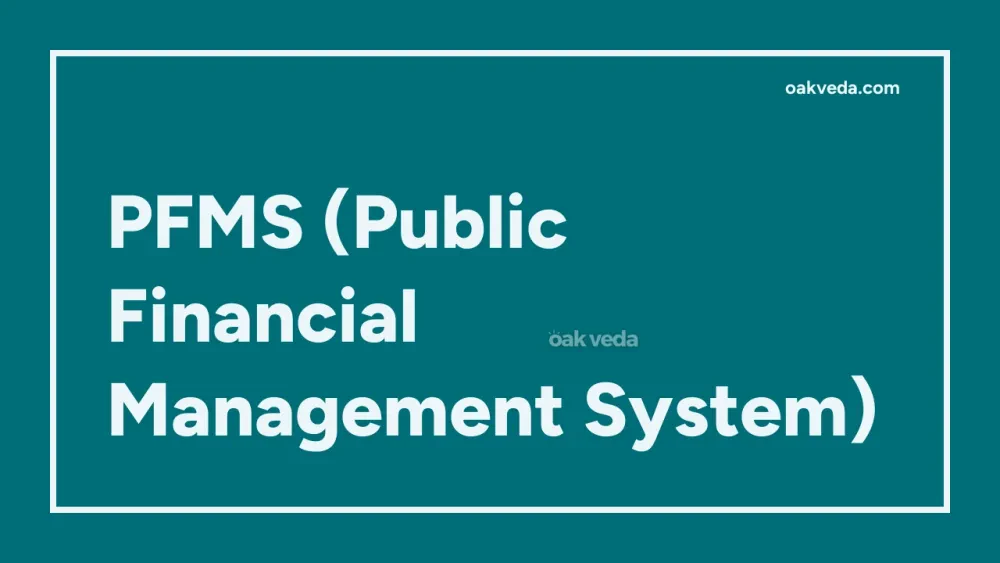
What is the Full Form of PFMS?
The full form of PFMS is Public Financial Management System. This comprehensive online platform plays a crucial role in India's financial management and digital governance initiatives.
What is Public Financial Management System?
The Public Financial Management System (PFMS) is an advanced web-based online software application developed by the Controller General of Accounts (CGA) under the Department of Expenditure, Ministry of Finance, Government of India. It serves as a powerful tool for efficient, transparent, and accountable management of public funds.
Origin and Development of Public Financial Management System
PFMS was initially introduced as the Central Plan Schemes Monitoring System (CPSMS). Over time, it evolved into a more comprehensive system to address the broader needs of public financial management. The transition from CPSMS to PFMS marked a significant milestone in India's journey towards digital financial governance.
How does Public Financial Management System work?
PFMS operates as an integrated platform that combines various financial processes:
- Fund Flow Management: It tracks the movement of funds from the central government to various implementing agencies.
- Direct Benefit Transfer (DBT): PFMS facilitates direct transfer of subsidies and benefits to citizens' bank accounts.
- Banking Interface: It integrates with the Core Banking Systems (CBS) of various banks for real-time transaction processing.
- Accounting and Reporting: PFMS provides a robust system for financial accounting and generation of reports.
Functions of Public Financial Management System
The PFMS serves several critical functions in India's financial ecosystem:
- Real-time Financial Tracking: It enables real-time monitoring of financial transactions across various government schemes and programs.
- Direct Benefit Transfer: PFMS supports the seamless transfer of benefits and subsidies directly to beneficiaries' bank accounts.
- Fund Flow Management: It ensures efficient and transparent management of fund flow from the central government to implementing agencies.
- Decision Support System: PFMS provides valuable insights and data for informed decision-making by government officials.
- Integration with Banking Systems: It interfaces with the Core Banking Systems of various banks for real-time payment processing.
Applications of Public Financial Management System
PFMS finds applications across various domains of public finance:
- Government Schemes: It is used for managing funds and tracking expenditures of various central and state government schemes.
- Subsidy Disbursement: PFMS facilitates the direct transfer of subsidies to beneficiaries under various welfare programs.
- Financial Reporting: It generates comprehensive financial reports for better accountability and transparency.
- Budget Execution: PFMS aids in efficient budget execution and expenditure management.
Features of Public Financial Management System
Key features of PFMS include:
- Real-time Data Access: Provides up-to-date information on financial transactions and fund utilization.
- Multi-level User Access: Offers role-based access to different stakeholders in the financial management process.
- Integration with External Systems: Interfaces with various banking and government systems for seamless data exchange.
- Customizable Reporting: Allows generation of customized reports as per user requirements.
- Digital Signatures: Supports the use of digital signatures for enhanced security and authentication.
Benefits of Public Financial Management System
PFMS offers numerous benefits to the government, implementing agencies, and citizens:
- Enhanced Transparency: Provides a clear view of fund utilization and expenditure patterns.
- Improved Efficiency: Streamlines financial processes, reducing delays and administrative overhead.
- Better Fund Management: Enables optimal utilization of funds by providing real-time information on fund availability.
- Reduced Leakages: Minimizes the scope for fund leakages and misuse through direct transfers and real-time tracking.
- Timely Benefit Delivery: Ensures quick and accurate transfer of benefits to intended beneficiaries.
- Data-driven Decision Making: Provides valuable insights for policy formulation and program implementation.
Limitations or Challenges of Public Financial Management System
Despite its advantages, PFMS faces some challenges:
- Digital Literacy: The system's effectiveness depends on the digital literacy of users at various levels.
- Infrastructure Requirements: Reliable internet connectivity and IT infrastructure are essential for optimal functioning.
- Data Security: Ensuring the security and privacy of sensitive financial data remains an ongoing challenge.
- Change Management: Adapting to the new system requires significant change management efforts across various government departments.
Future Developments in Public Financial Management System Technology
The future of PFMS looks promising with potential developments such as:
- AI and Machine Learning Integration: For predictive analytics and anomaly detection in financial transactions.
- Blockchain Technology: To enhance security and transparency in fund transfers and record-keeping.
- Mobile-first Approach: Developing more mobile-friendly interfaces for easier access and usage.
- Enhanced Interoperability: Further integration with other government systems for seamless data exchange.
FAQs on PFMS Full Form
-
What is the primary purpose of PFMS? PFMS primarily aims to facilitate efficient, transparent, and accountable management of public funds in India.
-
Can PFMS be used for state government schemes? Yes, PFMS has been extended to cover state government schemes as well, promoting unified financial management.
-
How does PFMS support Direct Benefit Transfer (DBT)? PFMS enables direct transfer of benefits to Aadhaar-linked and non-Aadhaar bank accounts through integration with NPCI.
-
Is PFMS mandatory for all government departments? The government is progressively mandating the use of PFMS across various departments and schemes for better financial management.
-
How does PFMS contribute to Digital India initiative? PFMS plays a crucial role in Digital India by digitizing financial transactions, promoting transparency, and enabling real-time financial management.
In conclusion, the Public Financial Management System (PFMS) represents a significant leap forward in India's digital governance and financial management capabilities. By streamlining processes, enhancing transparency, and facilitating direct benefit transfers, PFMS is playing a pivotal role in transforming the country's public finance landscape.
You may be interested in:

